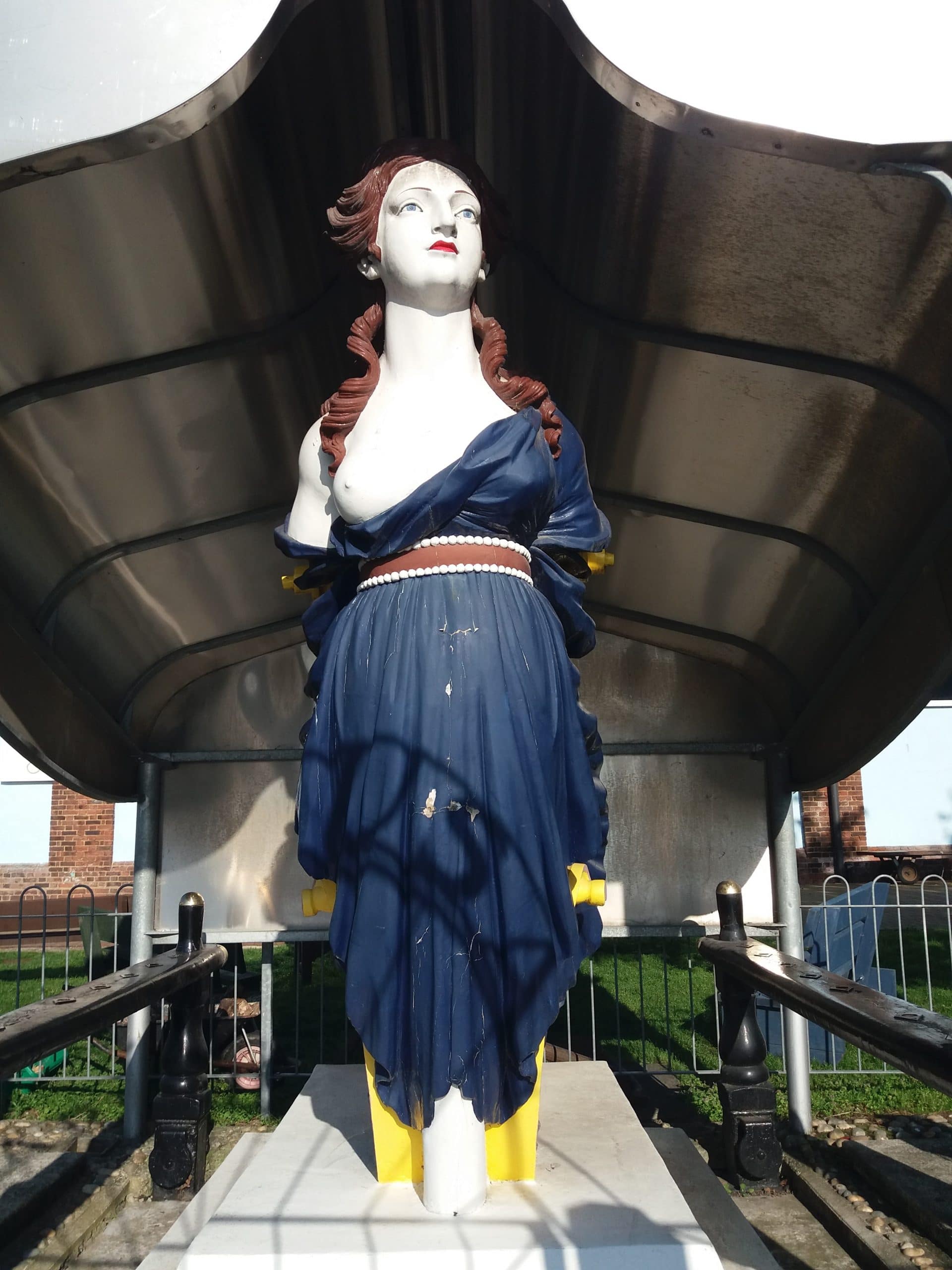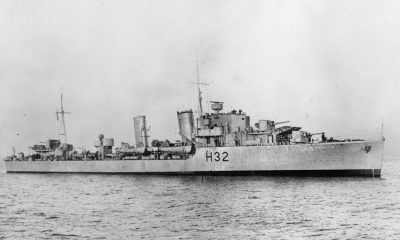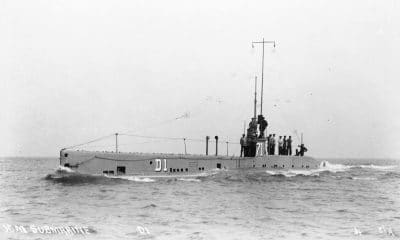News
HMS Arethusa figurehead Grade II listed

 An elegant wooden figurehead from the Royal Navy ship HMS Arethusa, which went into battle in the Crimean War in 1854, has been listed at Grade II by the Department for Digital, Culture, Media and Sport on the advice of Historic England.
An elegant wooden figurehead from the Royal Navy ship HMS Arethusa, which went into battle in the Crimean War in 1854, has been listed at Grade II by the Department for Digital, Culture, Media and Sport on the advice of Historic England.
In Greek mythology, Arethusa was a sea nymph who fled from her home in Arcadia beneath the sea and came up as a fresh water fountain on the island of Ortygia in Syracuse in Sicily. HMS Arethusa’s figurehead is depicted as a 3.5 metre high painted female bust with brown hair parted in the centre with ringlets. She is wearing a loose early Victorian period dress with a waistband and her right breast is exposed, as in the 19th century a naked woman was thought to be able to calm a storm at sea. The figurehead was carved by James Hellyer and Sons of London and Portsmouth who had a long tradition as ships’ carvers.
Commissioned into the Royal Navy in 1849, the 50 gun Fourth Rate sailing frigate was one of three training ships based in Kent from 1867. HMS Arethusa was decommissioned in 1874 and loaned by the Admiralty – a government department responsible for the command of the Royal Navy – to a charity called ‘Shaftesbury Homes and Arethusa’ as a training ship and boarding school for 250 destitute young boys. The boys were taught maritime skills, preparing them for service in the Royal Navy or Merchant Navy. She was moored next to the charity’s existing training ship ‘Chichester’ at Greenhithe in Kent before moving to Lower Upnor in the River Medway.
In 1929, a survey found the ship to be rotten and leaking and three years later HMS Arethusa was no longer viable. She was returned to the Admiralty and was sold to Castle’s ship-breakers in 1933. The figurehead was retained by the charity which is now known as Shaftesbury Young People and displayed at their onshore premises at Lower Upnor, Rochester. The site has since been developed into the Arethusa Venture Centre and the figurehead is sited at the front of the Centre, facing Upnor Reach, River Medway.
Michael Ellis, Heritage Minister said: “HMS Arethusa’s figurehead is a rare survivor of the Crimean War and an important symbol of Britain’s maritime heritage. By protecting it, we are ensuring that an important part of the country’s seafaring history is preserved for future generations.”
Duncan Wilson Chief Executive of Historic England said: “The survival of former bow figureheads as statues helps demonstrate the rich and colourful history of our maritime past. HMS Arethusa’s figurehead is a tangible reminder of the heyday of sailing ships in the Royal Navy. By listing the figurehead, we can now be certain that its future and the power of the story behind the carving will not be lost.”
There are four other listed figureheads in England including: the figurehead from the 1842 wreck of the Caledonia (Listed Grade II in 1985), the figurehead from HMS Wellesey dated c.1839 (Listed Grade II in 1971), figurehead believed to be from the barque Roseau (Listed Grade II in 1971) and the figurehead from the 1860 warship Admiral Lord Howe (Listed Grade II in 1983):
There are also five figureheads incorporated into listed buildings such as the Jolly Sailor Public House in Bursledon, Hampshire and the Old Carpenters Arms in Littlebury, Essex.
For more information about Historic England visit their website by clicking here.
Gear News
Introducing the TR-80, IR-50 and CS-30 Regulators from DYNAMICNORD

Whether you are a beginner or a professional diver – with the three new main regulators from DYNAMICNORD, everyone will find their favourite regulator. They all look super stylish.
Excellent performance with the TR-80
Quality and performance are the be-all and end-all for regulators. It is not for nothing that the TR stands for Tec Reg. The innovative design of the TR-80 guarantees absolute reliability – even in ice-cold waters.

Perfect breathing effort at 0.8 J/l / certified for diving in waters below 10 degrees / structural design made of solid brass for best cold protection / membrane-compensated design with dry seal of the first stage / reduced exhalation effort thanks to optimized exhalation membrane and bubble deflector / adjustable Venturi (dive/predive) and adjustment knob for individual inhalation comfort / innovative design of the front cover prevents free-flow in strong currents or when diving with scooters / design made of sandblasted brass, matt chrome finish / 2 HP and 4 LP outlets / mouthpiece made of high-quality, anti-allergic silicone for maximum comfort.


Amazing underwater adventures with the IR-50
The IR-50 is the top regulator for advanced and experienced divers. Natural breathing is the essence of this regulator.

Ideal breathing effort at 0.8 J/l /certified for diving in waters below 10 degrees / compensated membrane / adjustable venturi (dive/predive) and adjustment knob for individual inhalation comfort/ outlet valve and deflector for minimum exhalation effort and reduction of bubbles on the face / design made of sandblasted brass, matt chrome finish / 2 HP and 4 NP outlets / mouthpiece made of high-quality, anti-allergic silicone for maximum comfort.


The Workhorse – our CS-30
For diving centres and diving beginners – the workhorse stands for strong construction, reliability and robustness. Perfect for your training.

Optimal breathing effort at 0.8 J/l /recommended for diving in waters above 10 degrees / non-compensated piston / adjustable venturi (dive/predive) / outlet valve and deflector for minimum exhalation effort and reduction of bubbles on the face / design made of sandblasted brass, matt chrome finish / 1 HP and 3 NP outlets / mouthpiece made of high-quality, anti-allergic silicone for maximum comfort.


Octopus OP-30
The OP-30 is the ideal addition to all DYNAMICNORD regulators. It is identical in construction to the CS-30.

The TR-80, IR-50, CS-30 (DIN & INT) regulators and the Octopus OP-30 are available from DYNAMICNORD dealers and in the online store.
DYNAMICNORD – Your Outdoor Companion.
Marine Life & Conservation
Paul Watson Released as Denmark Blocks Japan’s Extradition Bid

Renowned anti-whaling activist Paul Watson has been released from custody in Greenland after spending five months in detention. Denmark’s Justice Ministry rejected Japan’s request for his extradition, citing insufficient guarantees that his time already served in custody would be credited against any potential sentence.
The 74-year-old Canadian-American was arrested on July 21 in Nuuk, Greenland’s capital, when his ship docked to refuel. His arrest was based on a 2012 Japanese warrant related to a 2010 encounter in Antarctic waters. Japan alleged Watson obstructed operations and caused damage to a whaling research ship during efforts to disrupt illegal whaling. Watson has consistently denied these claims, maintaining his commitment to marine conservation.
Denmark, which oversees extradition matters for Greenland, concluded that while the legal conditions for extradition were met, the lack of assurances from Japan regarding time-served credit made extradition untenable.
In a video shared by his foundation, Watson expressed gratitude and relief, saying, “After five months, it’s good to be out… and good to know they’re not sending me to Japan.” He added that the most difficult part of his time in custody was being separated from his two young sons.
Watson is a pioneering figure in marine conservation, known for founding the Captain Paul Watson Foundation in 2022 after decades of activism with the Sea Shepherd Conservation Society. His bold efforts to defend marine life have earned him widespread support, including from celebrities and conservationists. His work has also been featured in the acclaimed reality TV series Whale Wars.
Watson’s lawyer, Jonas Christoffersen, praised the decision, stating, “We are happy and relieved that Paul Watson is now free.” He added that Watson is eager to reunite with his family and continue his vital work.
The arrest occurred while Watson’s vessel, the M/Y John Paul DeJoria, was en route to the North Pacific with a team of 26 volunteers to intercept a Japanese whaling ship. His foundation described the arrest as politically motivated and emphasized that Watson’s actions were focused on ending illegal whaling practices.
Japan resumed commercial whaling in 2019 after leaving the International Whaling Commission, asserting that whale meat is a cultural tradition. Conservationists, however, continue to challenge these practices, highlighting their impact on marine ecosystems.
Despite the challenges, Watson remains steadfast in his mission to protect marine life and bring attention to whaling practices. His dedication to ocean conservation has made him a globally respected advocate for the environment.
-

 News2 months ago
News2 months agoIconic SS United States to become the World’s Largest Artificial Reef
-

 News3 months ago
News3 months agoBook Review – 52 Assignments: Underwater Photography
-

 Gear News3 months ago
Gear News3 months agoDYNAMICNORD – New German diving brand enters the British market
-

 News3 months ago
News3 months agoExploring Cenote El Pit: A Diver’s Dream
-

 Gear News3 months ago
Gear News3 months agoTry BARE drysuits (and maybe even win one!) this Friday with Sea & Sea at North West Dive Fest
-

 Marine Life & Conservation3 months ago
Marine Life & Conservation3 months agoBook Review: Coral Triangle Cameos
-

 Blogs2 months ago
Blogs2 months agoDive the Egyptian Red Sea this Autumn with Regaldive
-

 News3 months ago
News3 months ago2024 Ocean Art Underwater Photo Competition Announced
















